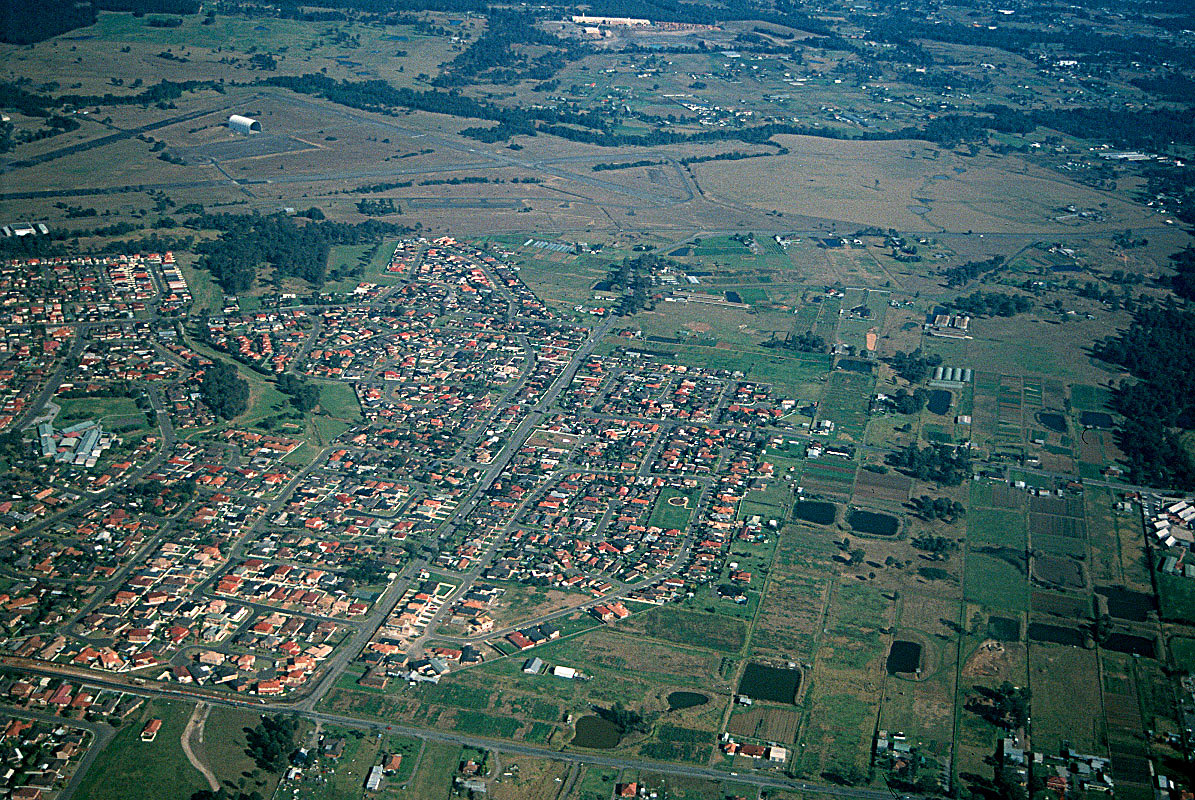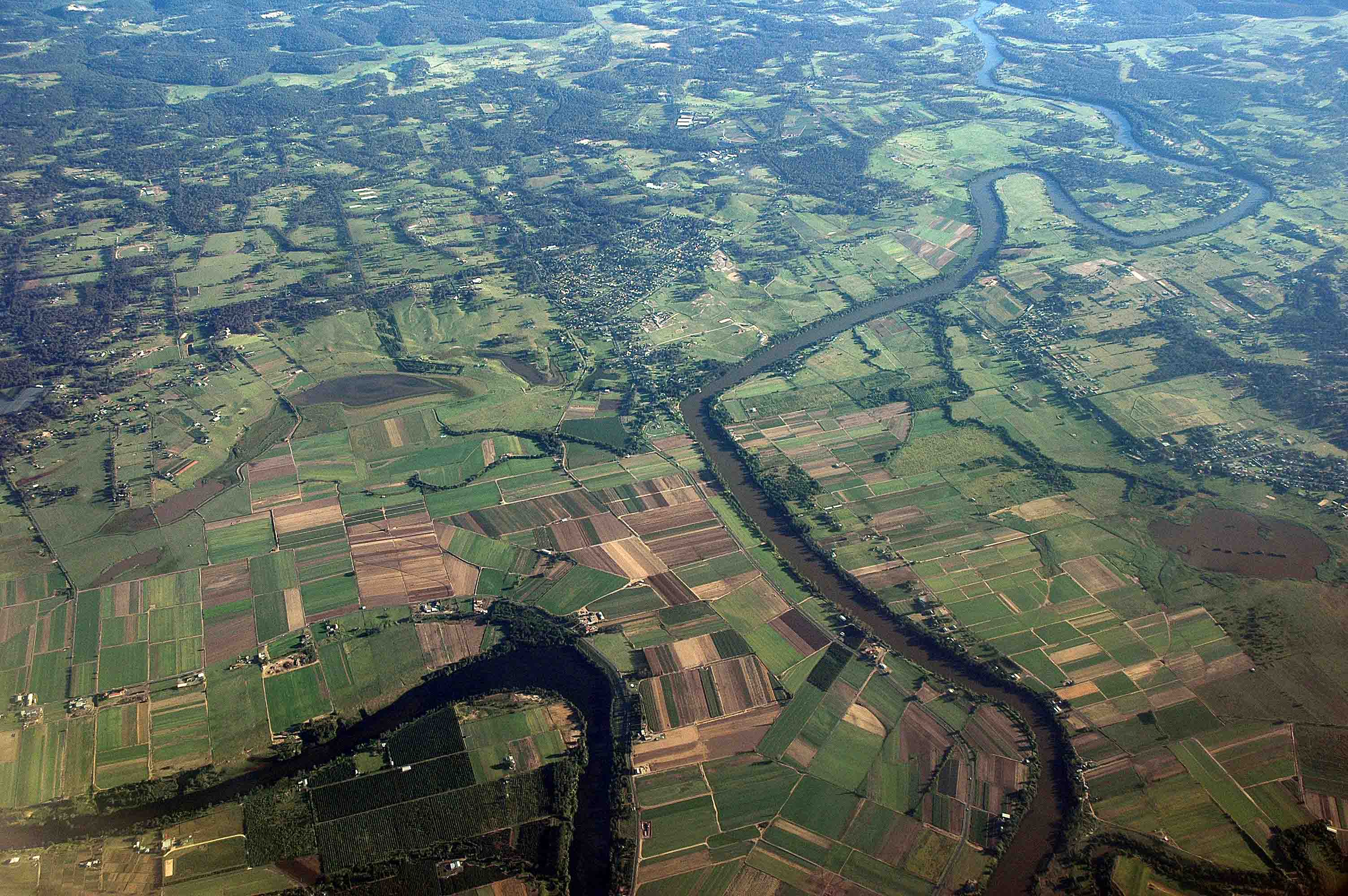

Newsletter
A View From The Edge
Issues in Rural and Metropolitan Fringe Planning
Ian Sinclair,
Principal Consultant, Edge Land Planning
Rural and Environmental Planning Consultants
As published in New Planner, The Magazine of the Planning Profession in NSW
Number 81, December 2009
Planning for Sydney's Food Security - Issues
The issue of food security and where it is grown is an issue that is gaining currency in the debate about climate change, sustainability and diminishing oil and energy resources.
The United Nations has predicted that global food production will need to double to feed the predicted estimated world population of 9.5 billion in 2050. However around the world we are also eating up the good land on the metro fringe that grows this food and instead are growing houses on it to provide for the ever increasing urbanisation of our population.
It has also been the focus of 2 recent conferences in Sydney - 'Feeding Sydney' (UWS Hawkesbury Foundation) and 'Food Summit 2009 - Hungry for a Change: shaping food policies that are fair and sustainable' (Sydney Food Fairness Alliance). Both of these conferences called for action on food security noting that the food producing areas of Sydney are being taken over by housing and indicating that food supply should be addressed when planning for the future growth of Sydney. The Hawkesbury Communiqué called for a National Food Strategy and the Food Summit Declaration called for the State Government to form a Food Policy Council with State-wide responsibility. The photo below shows how growth is eating up the food producing lands in the Schofields area in Sydney's northwest.

Food security is a planning issue because as planners we prepare strategies to ensure that it is used for its best use.
"Food is a sustaining and enduring necessity. Yet among the basic essentials for life - air, water, shelter, and food - only food has been absent over the years as a focus of serious professional planning interest." (American Planning Association Policy Guide on Community and Regional Food Planning, 2007).
This quote is very relevant to the issue of the metropolitan growth. There has been a lot of focus lately on the Murray-Darling Basin as Australia's food bowl - this is not quite correct. The metropolitan fringe is a significant contributor of perishable vegetables, poultry, cut flowers, nurseries and turf. The fringe of Metropolitan Sydney is one of the State's food bowls. It produces $1 billion of agricultural produce each year - which represents 12% of the total NSW production. It has a good climate, good access to water and is close to the main population centre.
Analysis of the ABS 2006 Agricultural Census has shown the dominance of the Sydney region. This can be best exemplified by the vegetables. The highest percentage of NSW vegetable production comes from the Murray and Murrumbidgee Regions (20% and 38% respectively) whilst Sydney has only 16%. However when we break it down into perishable commodities, it is a totally different picture. Sydney has 91% of NSW Asian Vegetable production, 90% of parsley, 82% of Mushrooms, 76% of capsicum and chillies, 70% of cucumbers 63% of basil and coriander and 61% of cabbages. The dominance of the Sydney region is also evident with Poultry, Nurseries, Flowers and Turf. The photo below shows some of the land that is used to grow vegetables and turf in the Wilberforce and Pitt Town areas.

The landscape of Sydney's 'food lands' is made up of mostly rural residential development (78% of all uses are rural residential) and it is highly fragmented (76% of all lots are under 3 ha). A recent report for Horticulture Australia (Malcolm & Fahd 2009) noted that there are 1,052 vegetable farms in Sydney. These are interspersed with rural residential uses as well as schools, clubs and other non rural uses. This leads to land use conflict from odour, noise, spray drift, visual issues and so on. This is exacerbated by the high amount of fragmentation which leads to inadequate buffer distances. One other impact is the price of land. In Penrith LGA in 2000 a 2 ha lot was $300,000 and now it costs up to $1 million to buy land the same land for farming. This makes it even harder for the farmer. Malcolm and Fahd also noted that half of the vegetable farms are in the North West and South West Growth Centres and will be paved with roads and houses over the next 25 years or so.
Denis Winston, in his book titled Sydney's Great Experiment - the Progress of the Cumberland County Plan (1957), said "…preservation of the farms and market gardens therefore is of considerable importance for the well-being of Sydney as well as for the economy of the State". This statement is still correct but since then the city has expanded into the agricultural hinterland, which is a diminishing resource. The policy response will be discussed in the next issue.
Top of page...
launched March, 1999
copyright © 1999 - 2013 Edge Land Planning
All rights reserved.